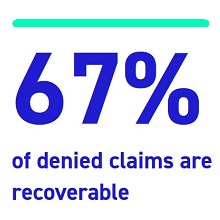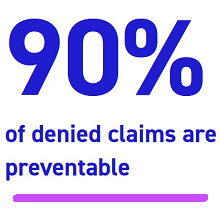An Introduction to Acute Care Hospital Technical and/or Administrative DenialsPosted on August 5, 2020 A technical or administrative denial occurs in the acute care hospital setting when a facility did not follow or was unable to follow the processes or policies for appropriate payment outlined by the payer. To appeal this type of denial, understanding the payer’s requirements and the facility’s contractual responsibilities is imperative. Facilities may receive notification of a technical or administrative denial via an explanation of benefits (EOB), remittance advice (RA), or a traditional denial letter depending on the payer. The notification may include limited detail and require follow up with the payer to confirm the specific denial reason. Technical or Administrative Denial Reasons Many issues can trigger a technical denial, either at the beginning of a hospital admission or at some point during the hospitalization. Examples of technical or administrative denials include the following:
Understanding the specific reason for a technical or administrative denial is critical in the appeal process. By understanding the denial at hand, an effective argument can be formulated to refute and overturn the technical or administrative denial. Extenuating Circumstances Often, a technical or administrative denial is a result of an extenuating circumstance. Extenuating circumstances are the reasons why the facility was unable to comply with the processes or policies outlined by the payer. Many payers have specific policy guidelines that list extenuating circumstances they will consider when reviewing a technical or administrative denial on appeal. Remember to refer to the specific plan policy regarding technical or administrative denials as you investigate the cause of the denial. The plan may have a provision to overturn the denial when provided with documentation on appeal that explains the extenuating circumstance. Be aware that many plans will not review an appeal for a technical or administrative denial without first receiving written notification of the extenuating circumstance. The extenuating circumstance may be addressed in a cover letter, plan specific appeal document, or at the beginning of the appeal. However, some plans will not open the appeal packet until the extenuating circumstance has been identified and accepted as legitimate, so it is best practice to contact the payer and inquire which strategy is preferred prior to submitting an appeal. Examples of extenuating circumstances include but are not limited to the following:
It is important to note that technical or administrative denials are not based on medical necessity. A medical necessity appeal alone will not overturn a technical or administrative denial. Without identification and explanation of an extenuating circumstance, the opportunity for a successful appeal is low. |




